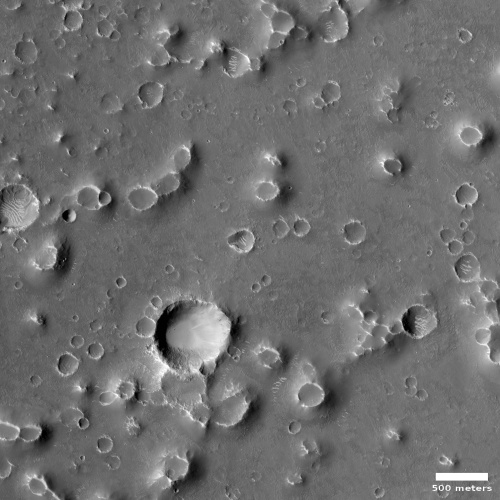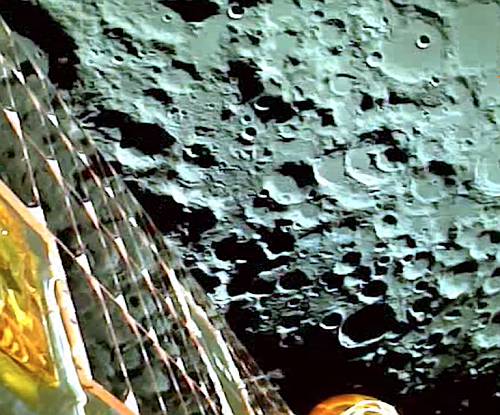Martian craters or volcanoes?
Cool image time! The picture to the right, cropped and reduced to post here, was taken on June 30, 2023 by the high resolution camera on Mars Reconnaissance Orbiter (MRO). The scientists label these features “cones” because many of the depressions sit on top of a mound or hill, suggesting some form of volcanic feature, either from erupting lava, ice, or mud.
Yet, are they volcanoes? Some or even many could instead be impact craters, created when a asteroid broke up during infall, creating a spray of bolides. Erosion of surrounding terrain can create what scientists call pedestal craters, but if all these craters were from an impact than all would either be pedestal craters, or not. Instead, we have a mix of some craters above and others level with the terrain.
» Read more
Cool image time! The picture to the right, cropped and reduced to post here, was taken on June 30, 2023 by the high resolution camera on Mars Reconnaissance Orbiter (MRO). The scientists label these features “cones” because many of the depressions sit on top of a mound or hill, suggesting some form of volcanic feature, either from erupting lava, ice, or mud.
Yet, are they volcanoes? Some or even many could instead be impact craters, created when a asteroid broke up during infall, creating a spray of bolides. Erosion of surrounding terrain can create what scientists call pedestal craters, but if all these craters were from an impact than all would either be pedestal craters, or not. Instead, we have a mix of some craters above and others level with the terrain.
» Read more











